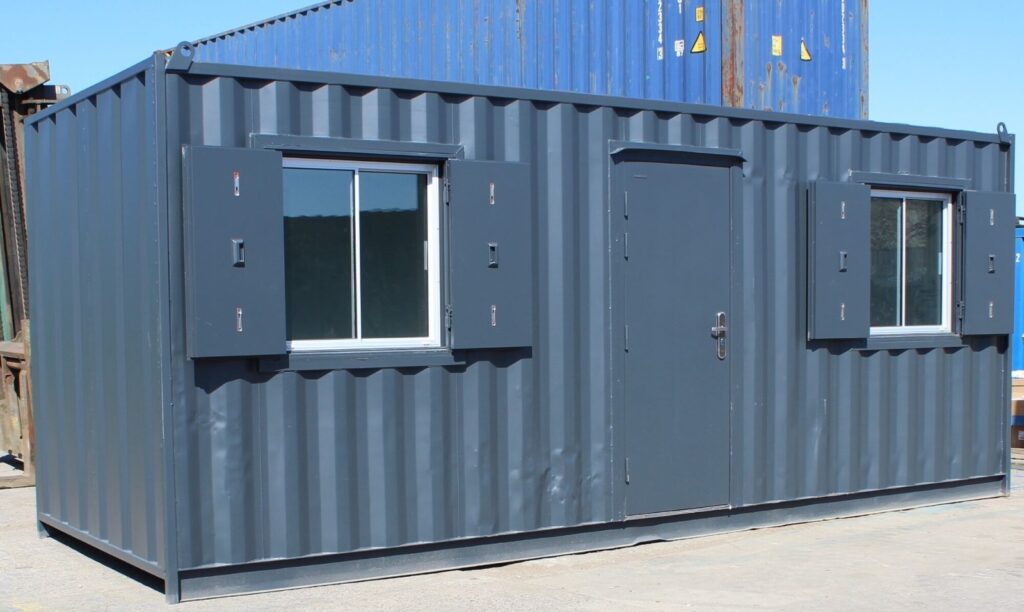Temporary and Remote Work Office Containers

The Flexibility Is More Than Ever
The office container does not entail a steel box that has desks that are tightly packed. It is a natural reaction to the working schedule. Workgroups that operate remotely, temporary works, and ad hoc expansions of space demand spaces that are easily constructed and easily transported and transformed without generating waste. This is one such structure that is bound to have the businesses not bound into a long-term commitment in case of a balance of businesses in the context of uncertainty.
Mobility as Inertia
Frequently remote work comes along with an opportunity elsewhere. Pop-up or construction sites cannot afford to wait months before they gain permanent offices for seasonal construction. Containers can do that by following the team. Bear the weight, push it, lay it down and go to work. It is also ready to use the workstation rather than installing its systems in every new location. Continuity in the operations is perpetuated by that continuity.
Temporary No Provision
Weak arrangements do not work well on short-term projects. A container is robust and simultaneously flexible. Steel walls keep weather out. The interiors are crafted by hand, and this creates an illusion that the location was not so much of a shanty town but rather a business office. Even in the short term, which is a period of six months, the workers get the sense of stability that they require. The stable environment will boost concentration in either the short or the long schedule.
How to Work a Small Room
The interior of a container is limited. Anyhow, such a restriction requires creativity. The most optimal designs use every inch of space. Desks fold into walls. Storage is under benches. Partitions are only whiteboards. A container does not imply a little box but a multi-purpose smart plan work point.
Shifting Work Zones
The efficiency is developed further when the container has been subdivided into regions. One of them may be a quiet workspace for focused work and the other a meeting area. The zones are flexible with movable panels or movable shelving units. Daily layout adjustment can be done by the workers. Such flexibility means that the identical room may be used in brainstorming or meetings, or in a state of deep concentration—without necessarily having to construct more rooms.
Power and Connectivity
Homework does not exist without good technology. Smart wiring, climate system and satellite internet systems in containers can be present. Cables do not present hazards since they are hidden in conduits. The stores and the portals are not situated in isolated locations, as in the places where the employees really require them. This makes the productivity better since people do not necessarily have to move around and step on wires or leave in search of power.
Comfort Motivates Productivity
Project site storage containers need not look like bunkers. Small touches shift the mood. Large windows introduce natural light to ensure that the eyes of a person do not strain a lot and conserve energy. It is also the ventilation systems that ensure that air is kept fresh in the remote settings. It can be moderated in weather and concentrated on, be it the heat in the desert or the cold in winter. The comfort will be in direct proportion to the production. The employees perform better when they are not preoccupied with the needs.
Plants and Natural Elements
Plants liven up a little office. Plants clean the air, lower stress levels and make a steel container a friendlier place. Even the potted plants make the walls of a utilitarian environment rounded. Employees observe, and morale does the same. It serves as a reminder that it is not only the saving of energy that makes design eco-friendly; people may be preserved as well.
The Psychology of Color
Colors are not only aesthetics making effects. The cool colors like blues or greens ease the nerves to make the long working hours. Images of more violent colors, such as yellow spur vitality and artistic streams. Containers may serve as both mood and practical means: light and color indicators may be used to suggest mood by use of different colors and shades in different areas. Go into a quiet place to write. Take away to a sunnier spot to talk. The walls do half the work.
Flexibility to Business Requirements
Each team and project has requirements. A container can be tailored to make it meet those needs rather than dump people into the situation of trying to adjust to a predetermined design. Enterprises that might require small personal offices within. Other people require open workspace. Containers can be piled or other units combined to create even larger temporary headquarters.
Why Office Containers Work
Remote working and short-term projects cannot be very practical in the physical offices. They are too long, too expensive and inelastic. Containers stuffed into that crack. They are heavy and lightweight at the same time, arguably versatile and without compromising on professionalism and comfort. Above all though, they provide teams with a secure platform to turn to in the process of thinking, cooperating and producing results—regardless of the location of work.
